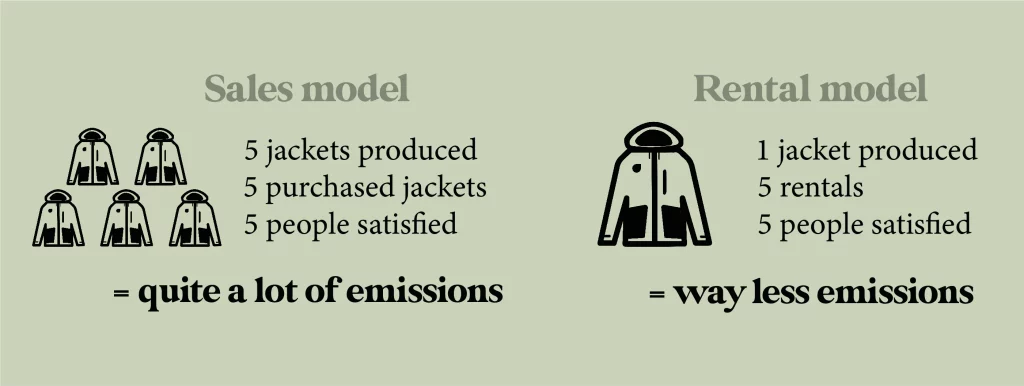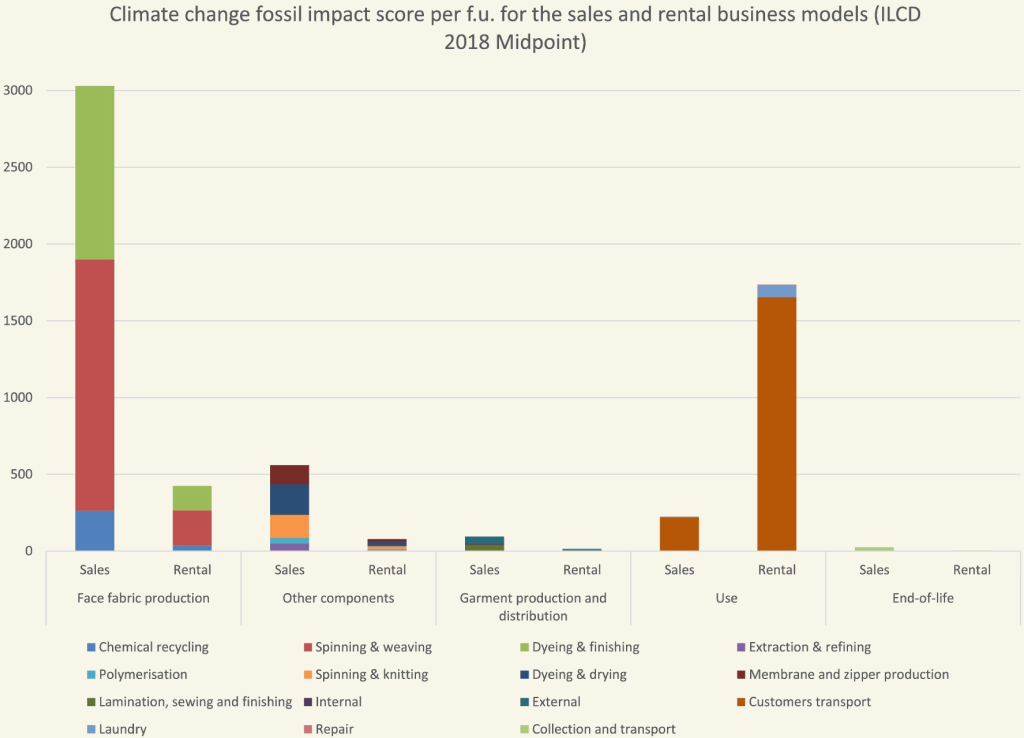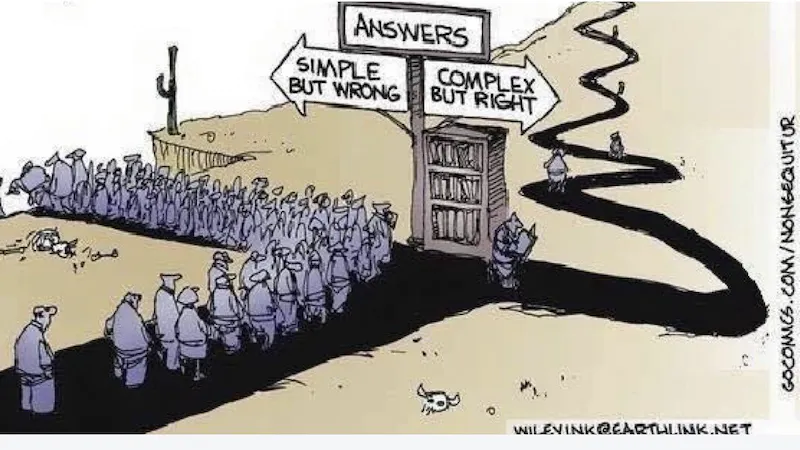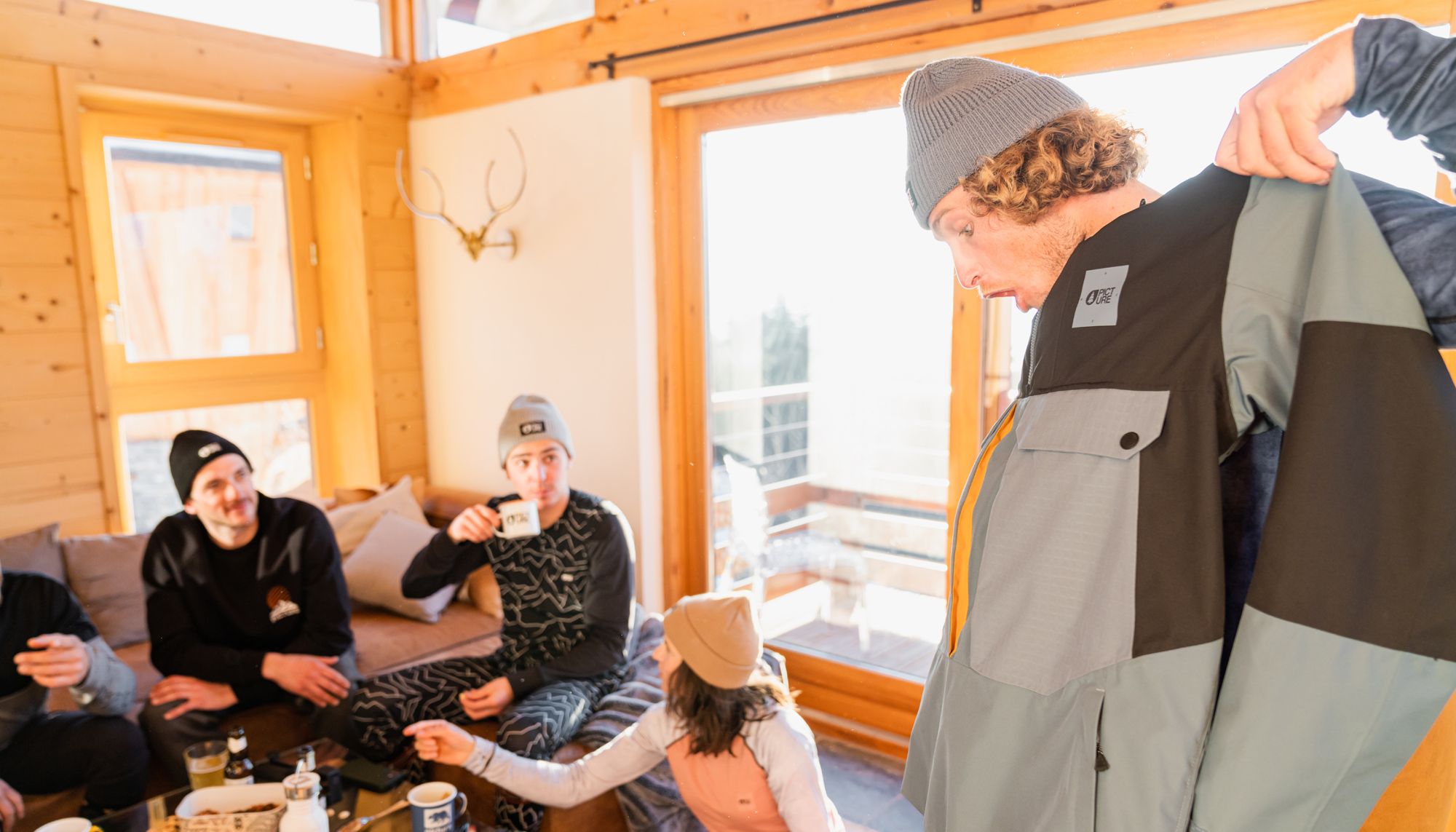In 2021, we launched our rental program. The question we were asking ourselves at the time was how do we make the apparel industry more sustainable? We are picking our brain (and experts on the subject like Anna Smoothy of Cirkel Supply Co) on that question while jumping into our 2nd rental season. That’s why we want to take the time to reflect, predict, and nerd out on rental as a business model, not merely a fun sustainability side project.
Our main motivation as a committed textile brand is to make this industry less polluting and more sustainable. There are multiple points of improvement, but 3 themes clearly stand out:
- Produce less, consume less
- Transitioning out of coal and gas electricity for the spinning, weaving, and dyeing stages
- Getting away from oil-based materials
To have a vision on how to achieve these improvements in the textile industry, To have a more global vision of the many regulatory levers to activate to transform this industry, we strongly advise you to explore the claims of the En Mode Climat movement, where Picture is an active member. They lay out particular regulatory levers that will encourage these improvements. In this general framework, we believe that rental has a role to play, as a lever to reduce impact, and as a real business model.
Our excitement starts with a *very* mathematical premise:

Thus, rental should have a lower environmental impact when compared to the sales model. We still believe in this assumption. To test our belief, we want to see what impact points are and what we can dial in on to increase the chances of positive environmental and social impact.
We need to make sure our vision is the good one; to do that, we must face the reality of numbers. Some studies, especially ‘Towards sustainable business models with a novel life cycle assessment method’, provide us with this. The researchers took these two models and analyzed them in terms of selling/renting a jacket over a concise period of time.
Their analysis framework is as follows:
– Classic sales model: 200 jackets manufactured, 200 jackets sold, a profit of 30,000 euros. The jacket has a retail price of 450 euros.
– Rental model: Approximately 1100 rental orders will be needed to obtain the same profit, but only 28 jackets will be manufactured. The average price of a rental is 55 euros, and the average duration is 5 days. When some jackets are not in a good shape anymore to be rent, they are sold second-hand at 60% of the original price, and the rental stock is replenished by adding newly produced jackets.
Note: At Picture, the idea is not to switch entirely from one model to another (which would be largely unrealistic) but rather to make them complementary.
This is the difference in environmental impact that they found:

“Application of the ReCiPe (H,A) and the ecological scarcity endpoint methods showed that renting reduces overall impacts by 33% and that the dominant impact category was climate change” plus “the total score for climate change was 43% lower in the rental model, meaning that it represents a more decoupled business,” aka renting has a lower environmental impact.
Article over, it’s that simple… is it? Rental = better yet there are some lever points that influence rental as a sustainable business model. The levers are:
Customer transportation: there is an assumption that each adventurer is driving to pick up and drop off their rental. The vehicle they are driving or riding is dependent on where they live. This has a significant effect as we know the transport sector produces 729 Mt CO2e emissions in the EU alone. Sales model requires 1 round trip to go buy the item; the rental model requires 2 round trips for each renter.
The production phase: This is something we are aware of, read more about it here. Rental has a lower impact in the production phase because you are producing fewer jackets for more uses. We are using fewer energy-intensive processes. Nonetheless, within the apparel industry, the production phase is heavily fossil fuel dependent, especially in countries like China where we produce our outerwear.

Now, understanding the different lever points, which actions can we take to make sure that rental is a positive business model?
Customer transport: we are optimizing the system already by using 3rd party logistics and delivering directly to you! Additionally, the majority of the renters from last season were from Paris/urban areas, where public transport is widely available and they are less likely to own a car. Additionally, to go to the mountain, they are probably using trains, further reducing the effect of customer transport.
Production phase: An action we want to reiterate, again & again, that the energy source through our supply chain must be transitioned to renewable energy. This is important for our overall business. If our products were manufactured in a low carbon country, then used for a rental program, that would at least make our sustainability manager super happy.
Washing phase: The maintenance and washing of the products, which consumes electricity, take place in France. As the French national mix is largely decarbonized, the CO2 impact will be very low. Conversely, a rental model in a country where coal is king (like in Poland for example) would make this phase much more emissive, but still not to the point of reversing the situation.
CONCLUSION
We encourage renting when you don’t practice much (10 days max in the year of skiing, snowboarding, or surfing). This way, the products are not made « almost for nothing ». But if you are a regular skier, being an owner makes sense! And in this case, we encourage you to keep your products as long as possible and to repair them if necessary.
Renting, buying new, buying second hand: those are all complementary with one common denominator : Sobriety
Have fun with your Picture products !
